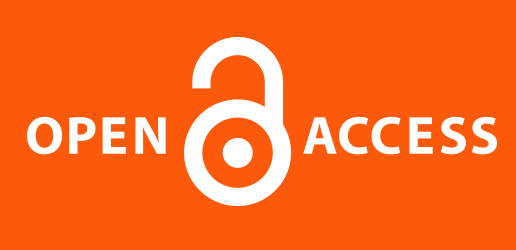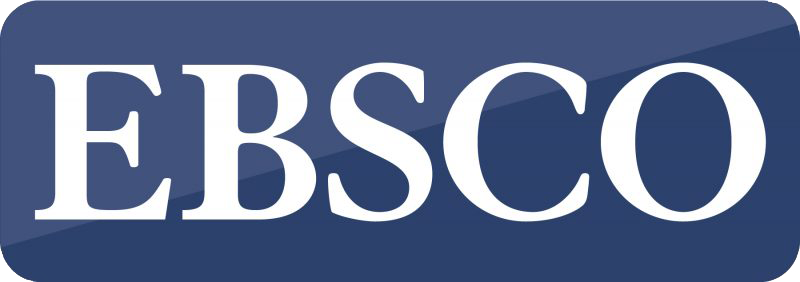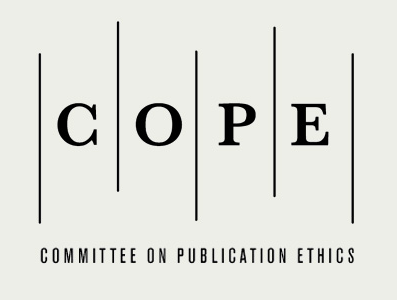Могућности књижевних текстова у интегративној настави из перспективе учитеља
Мирјана М. Стакић, Универзитет у Крагујевцу, Педагошки факултет, Ужице, Србија, имејл: mirjanastakic073@gmail.com
Бошко Љ. Миловановић, Универзитет у Приштини – Косовска Митровица, Учитељски факултет, Призрен – Лепосавић, Србија
Иновације у настави, XXXVII, 2024/4, стр. 48–63
| PDF | | Extended summary PDF |
DOI: 10.5937/inovacije2404048S
Резиме: Полазиште унутарпредметног и међупредметног повезивања могу бити књижевни текстови различитих жанрова. Реализовано је истраживање којим је обухваћен узорак од 225 учитеља да би се установило: 1) како практичари процењују могућности различитих врста књижевних текстова као полазишта интеграције у настави и 2) какве ставове имају о томе како примена књижевног текста као полазишта интеграције утиче на организацију и динамику наставе. Добијени резултати показују да учитељи најпозитивније процењују могућности које пружа прозна књижевност као полазиште интеграције, првенствено ауторска прича и народна бајка. Када је реч организацији и динамици наставе, највећи број је сагласан (у потпуности или углавном) у следећем: сви млађи разреди основне школе су погодни да се у њима користи књижевни текст као полазиште интеграције; књижевни текст се може користити као полазиште интеграције и ван наставе српског језика; примена књижевног текста као полазишта интеграције утиче на већу динамику наставе. Знатан број сагласан је и са тиме да у наставној пракси процес интеграције отежава избор адекватног књижевног текста, али је прилично и оних који су неодлучни, када је реч о овом питању. Добијени резултати показују да учитељи позитивно процењују могућности књижевних текстова као полазишта интеграције у настави, али покрећу и питање недовољне примене у пракси таквог начина рада и потребу за додатном подршком практичарима у извођењу интеграције.
Кључне речи: интегративна настава, књижевни текст, методика наставе српског језика, млађи разреди основне школе, српски језик
Summary: Literary texts of different genres can be the starting point for intra-curricular and intercurricular connections. Our research, that included a sample of 225 primary school teachers, was conducted to establish the following: 1) how practitioners evaluate the potential of different types of literary texts as a starting point for integration in teaching and 2) what attitudes they have about how the application of a literary text as a starting point for integration affects the class organisation and dynamics. The obtained results show that teachers most positively evaluate the possibilities provided by prose literature as a starting point for integration, primarily the tales written by authors and folktales. When it comes to the class organisation and dynamics, the largest number of teachers agree (completely or mostly) on the following: all lower grades of primary school are suitable for using a literary text as a starting point for integration; the literary text can be used as a starting point for integration even beyond Serbian language classes; the application of the literary text as a starting point for integration affects the greater dynamics of teaching. A considerable number also agrees with the fact that in teaching practice the process of integration makes it difficult to choose an adequate literary text, but there are quite a few who are undecided when it comes to this issue. The obtained results show that primary school teachers positively evaluate the potential of literary texts as a starting point for integration in teaching, but they also raise the issue of an insufficient application in practice of this form of work and the need for additional support for practitioners in performing integration.
Кeywords: integrative teaching, literary text, Serbian language teaching methodology, lower grades of primary school, Serbian language
Литература
- Acharya, I., & Panda, U. K. (2022). Geographical Imaginations: Literature and the ’Spatial Turn’. Oxford University Press.
- Andonovska-Trajkovska, D. (2017). The Impact of the Students’ Age on the Literary Text Analysis Approach: Teaching Methods and Approaches in Primary Education. Inovacije u nastavi, 30(3), 57–66. https://www.doi.org/10.5937/inovacije1703057A
- Aslan, Y. (2016). The Effect of Cross-curricular Instruction on Reading Comprehension. Universal Journal of Educational Research, 4(8), 1797–1801. https://www.doi.org/10.13189/ujer.2016.040808
- Barzani, S. H. H. (2020). The perceptions of EFL teachers and students on the use of short stories to enhance reading comprehension. Asian EFL Journal, 27(3.1), 325–341.
- Barzani, S. H. H., Meena, R. S., & Ali, H. F. (2021). Integration of Literature in English Language Teaching: Learners’ Attitudes and Opinions. Canadian Journal of Language and Literature Studies, 1(1), 27–43. https://doi.org/10.53103/cjlls.v1i1.12
- Blagdanić, S., Stanić, A., i Cvetanović, Z. (2019). Povijesni sadržaji u nastavi prirode i društva i književnoumjetnički tekstovi povijesne tematike – osnova za integraciju ili zabunu. U M. Kolar Billege, i A. Letina (ur.). Suvremene teme u odgoju i obrazovanju – STOO 2019. Zbornik radova simpozija Metodički pristupi odgoju i obrazovanju (str. 26–38). Učiteljski fakultet, Sveučilište u Zagrebu.
- Bobkina, J., & Dominguez, E. (2014). The Use of Literature and Literary Texts in the EFL Classroom; Between Consensus and Controversy. International Journal of Applied Linguistics & English Literature, 3(2), 248–260. https://doi.org/10.7575/aiac.ijalel.v.3n.2p.248
- Briwa, R. (2018). Teaching Literary Geography: An American Perspective. Literary Geographies, 4(1), 50–56.
- Cekić-Jovanović, O., & Marković, S. (2021). Possibilities of University Teaching Enhancement – Integration of Methods and Approaches in Teaching Literature with Science and Social Studies. Inovacije u nastavi, 34(1), 80–94. https://doi.org/10.5937/inovacije2101080C
- Cenić, D., i Vidosavljević, S. (2022). Primena integrativnog modela razvijajuće nastave u predmetu priroda i društvo. Baština, 57, 475–487. https://doi.org/10.5937/bastina32-38653
- Crawford, P. A., & Zygouris-Coe, V. (2008). Those Were the Days: Learning about History through Literature. Childhood Education, 84(4), 197–203. https://doi.org/10.1080/00094056.2008.10523007
- Csikar, E., & Stefaniak, J. E. (2018). The Utility of Storytelling Strategies in the Biology Classroom. Contemporary Educational Technology, 9(1), 42–60. https://doi.org/10.30935/cedtech/6210
- Durmaz, B. (2023). The Use of Literary Elements in Teaching Mathematics: A Bibliometric Analysis. Journal of Teacher Education and Lifelong Learning, 5(1), 152–172. https://doi.org/10.51535/tell.1232736
- Fink, L. D. (2003). Creating Significant Learning Experiences: An Integrated Approach to Designing College Courses. CA: Jossey-Bass.
- Gudjons, H. (1994). Pedagogija: temeljna znanja. Educa.
- Hones, S. (2015). Literary Geographies, Past and Future. Literary Geographies, 1(2), 1–5. https://doi.org/10.4324/9781315778273
- Hussein, S., Meena, R. S., & Ali, H. F. (2021). Integration of Literature in English Language Teaching: Learners’ Attitudes and Opinions. Canadian Journal of Language and Literature Studies, 1(1), 27–43. https://doi.org/10.53103/cjlls.v1i1.12
- Ilić, P. (2006). Srpski jezik i književnost u nastavnoj teoriji i praksi. Zmaj.
- Ivanović, J., i Nađ-Olajoš, A. (2014). Bajka u korelacijsko-integracijskom sustavu. U Lj. Raffai (ur.). A mese és kontextusai: VIII Nemzetközi tudományos konferencia tanulmánykötete (Bajka, priča i njeni konteksti: Zbornik radova VIII međunarodne naučne konferencije) (str. 212–223). Univerzitet u Novom Sadu, Učiteljski fakultet na mađarskom nastavnom jeziku.
- Khawlah, A. (2014). Literary Texts and the EFL/ESL Classrooms. International Journal of Liberal Arts and Social Science, 2(5), 217–229.
- Lazić, S., Matović, M., i Velišek-Blaško, O. (2019). Integracija pokreta u metodičkim aktivnostima studenata – budućih vaspitača. TIMS Acta 12, 27–36. https://doi.org/10.5937/timsact13-20421
- Maričić, S., & Stakić, M. (2019). Learning Mathematisc and Language through an Integrated Approach in Preschool Education. In S. Čotar Konrad, B. Borota, S. Rutar, K. Drljić, & G. Jelovčan (Eds.). Vzgoja in izobraževanje predšolskih otrok prvega starosnega obdobja (Early Childhood Education and Care of Children under the Age of Three) (pp. 295–309). Založba Univerze na Primorskem.
- Milanović, N., i Matejević, M. (2022). Stavovi roditelja prema čitalačkoj kulturi učenika mlađih razreda osnovne škole. Inovacije u nastavi, 35(4), 85–98. https://doi.org/10.5937/inovacije2204085M
- Mitsigkas, N. (2017). Using Literature as a Key Determinant to Enhance Learners’ Motivation. Humanising Language Teaching, 17(4). http://old.hltmag.co.uk/aug15/sart09.htm
- Mrkalj, Z. (2011). Na časovima srpskog jezika i književnosti. Zavod za udžbenike.
- Nikolić, M. (2012). Metodika nastave srpskog jezika i književnosti. Zavod za udžbenike.
- Petković, D. (2017). Narativne tehnike pevača epskog deseterca. Naučni sastanak slavista u Vukove dane, 46(2), 333–344. https://doi.org/10.18485/msc.2017.46.2.ch35
- Purić, D., i Stojanović, B. (2017). Čitalačke preferencije učenika mlađeg školskog uzrasta. Nasleđe, 16(42), 281–296.
- Rifqi, M. (2023). Students’ motivation and engagement in the learning process of literature teaching using imaginative re-creation technique. EduLite: Journal of English Education, Literature, and Culture, 8(2), 280–294. http://dx.doi.org/10.30659/e.8.2.280-294
- Stakić, M. (2021a). Mikroplaniranje integrativnog pristupa u nastavi srpskog jezika. Baština, 55, 15–29. https://doi.org/10.5937/bastina31-33229
- Stakić, M. (2021b). Obrada glagola u mlađim razredima osnovne škole. Književnost i jezik, 68(2), 433–446. https://doi.org/10.18485/kij.2021.68.2.13
- Stakić, M. (2023a). Primena književnog teksta kao polazišta integrativnog pristupa u nastavi u prvom ciklusu osnovnog obrazovanja i vaspitanja. Inovacije u nastavi, 36(2), 35–47. https://doi.org/10.5937/inovacije2302035S
- Stakić, M. (2023b). Funkcionalni metodički postupci Milije Nikolića u nastavi gramatike kao polazište integrativne nastave. U Lj. Bajić, Z. Mrkalj, i V. Brborić (ur.). Naučno delo i nasleđe profesora dr Milije Nikolića (str. 181–196). Društvo za srpski jezik i književnost Srbije.
- Stakić, M., i Maričić, S. (2018). Poezija Dragana Lukića kao integrativni element razvoja govora i matematičkih pojmova u predškolskom obrazovanju i vaspitanju. U V. Jović, i B. Ilić (ur.). Književnost za decu u nauci i nastavi, knjiga 21. (str. 369–385). Fakultet pedagoških nauka Univerziteta u Kragujevcu.
- Stojanović, B. (2017). Integrativni pristup narodnoj književnosti – potrebe i mogućnosti. Godišnjak Pedagoškog fakulteta u Vranju, 8(2), 121–140. https://doi.org/10.5937/gufv1702121S
- Takahashi, К. (2015). Literary Texts as Authentic Materials for Language Learning: The Current Situation in Japan. In M. Teranishi, Y. Saito, & K. Wales (Eds.). Literature and Language Learning in the EFL Classroom (pp. 26–40). Palgrave Macmillan.
- Trbojević, A. (2016). Upotreba stripa u obradi istorijskih sadržaja u razrednoj nastavi. Metodički vidici, 7(7), 65–88. https://doi.org/10.19090/mv.2016.7.65-88
- Trbojević, A. (2019). Sadržaji društvenih nauka u udžbeniku Prirode i društva iz ugla učenika. Zbornik radova Filozofskog fakulteta u Prištini, 49(1), 253–275. https://doi.org/10.5937/zrffp49-18127
- Vučković, D. (2017). Literature as a „Core“ of Integrated Teaching in Lower Elementary School Grades Curriculum. Proceedings Book – ICESS 2017 (pp. 32–48). https://www.researchgate.net/publication/328874834_Literature_as_a_Core_of_the_Integrated_Curriculum
- Wirth, K. R., & Perkins, D. (2013). Learning to Learn. https://www.montana.edu/rmaher/barrier_courses/ Learning%20to%20Learn%20Wirth.pdf.
- Zdravković, V. (2016). Integrativni pristup početnoj muzičkoj nastavi u osnovnoj školi (Neobjavljena doktorska disertacija). Pedagoški fakultet u Vranju Univerziteta u Nišu. https://eteze.ni.ac.rs/application/showtheses?thesesId=4383
Copyright © 2024 by the publisher Faculty of Education, University of Belgrade, SERBIA. This is an open access article distributed under the terms of the Creative Commons Attribution License (CC BY 4.0) (https://creativecommons.org/licenses/by/4.0/), which permits unrestricted use, distribution, and reproduction in any medium, provided the original paper is accurately cited.





